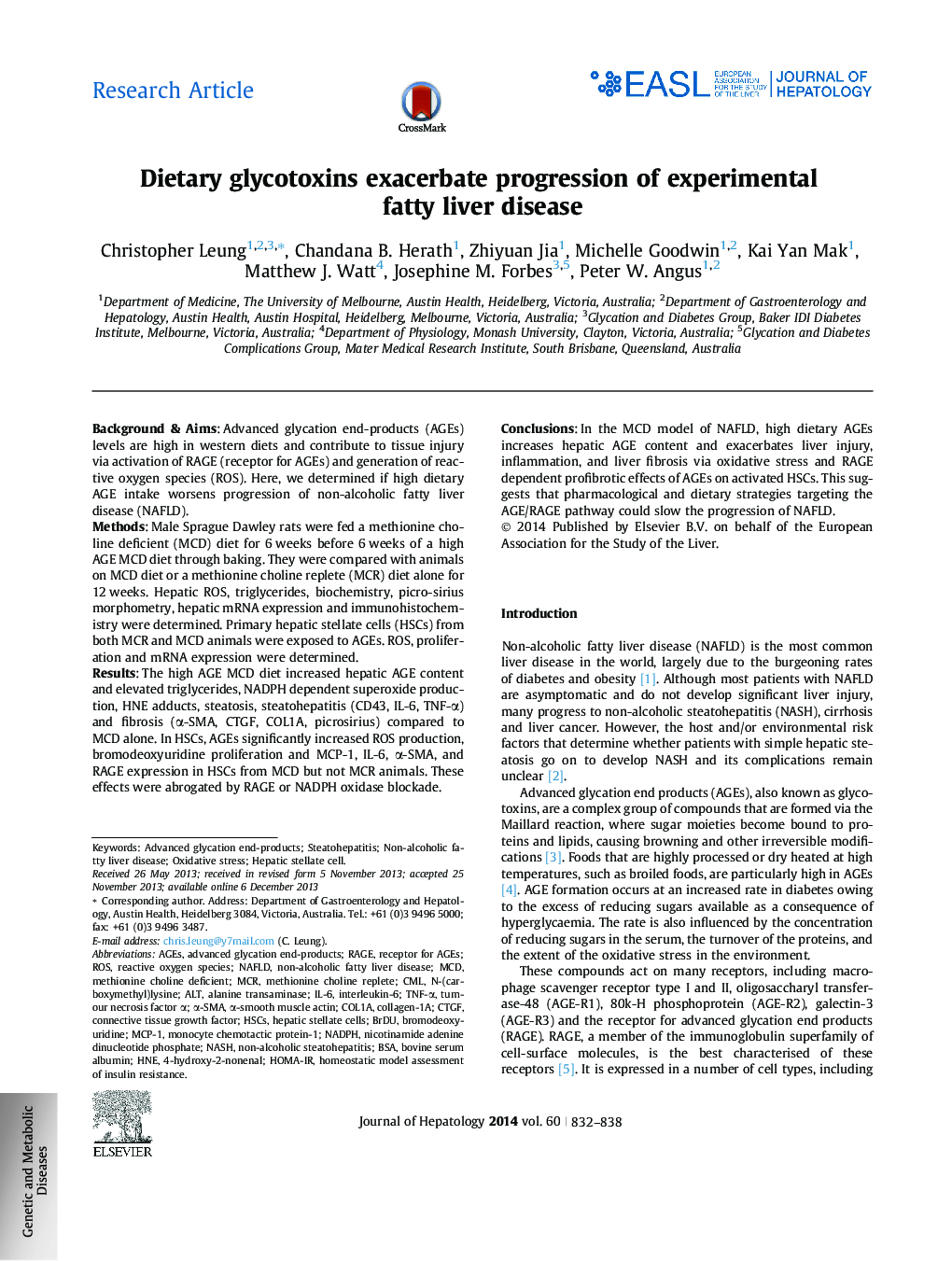| کد مقاله | کد نشریه | سال انتشار | مقاله انگلیسی | نسخه تمام متن |
|---|---|---|---|---|
| 6103711 | 1211131 | 2014 | 7 صفحه PDF | دانلود رایگان |
Background & AimsAdvanced glycation end-products (AGEs) levels are high in western diets and contribute to tissue injury via activation of RAGE (receptor for AGEs) and generation of reactive oxygen species (ROS). Here, we determined if high dietary AGE intake worsens progression of non-alcoholic fatty liver disease (NAFLD).MethodsMale Sprague Dawley rats were fed a methionine choline deficient (MCD) diet for 6 weeks before 6 weeks of a high AGE MCD diet through baking. They were compared with animals on MCD diet or a methionine choline replete (MCR) diet alone for 12 weeks. Hepatic ROS, triglycerides, biochemistry, picro-sirius morphometry, hepatic mRNA expression and immunohistochemistry were determined. Primary hepatic stellate cells (HSCs) from both MCR and MCD animals were exposed to AGEs. ROS, proliferation and mRNA expression were determined.ResultsThe high AGE MCD diet increased hepatic AGE content and elevated triglycerides, NADPH dependent superoxide production, HNE adducts, steatosis, steatohepatitis (CD43, IL-6, TNF-α) and fibrosis (α-SMA, CTGF, COL1A, picrosirius) compared to MCD alone. In HSCs, AGEs significantly increased ROS production, bromodeoxyuridine proliferation and MCP-1, IL-6, α-SMA, and RAGE expression in HSCs from MCD but not MCR animals. These effects were abrogated by RAGE or NADPH oxidase blockade.ConclusionsIn the MCD model of NAFLD, high dietary AGEs increases hepatic AGE content and exacerbates liver injury, inflammation, and liver fibrosis via oxidative stress and RAGE dependent profibrotic effects of AGEs on activated HSCs. This suggests that pharmacological and dietary strategies targeting the AGE/RAGE pathway could slow the progression of NAFLD.
Journal: Journal of Hepatology - Volume 60, Issue 4, April 2014, Pages 832-838
